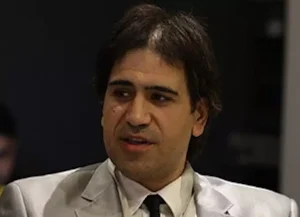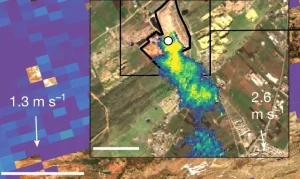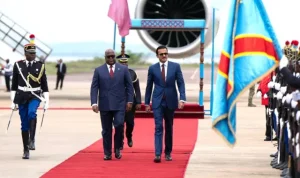Hafed Al-Ghwell: EU’s new migration deal doesn’t quite cut it

Libya
The EU’s latest attempt at overhauling its migration and asylum policy framework, through a proposed Pact on Migration and Asylum, comes at a critical juncture in the bloc’s history.The pact, a comprehensive suite comprising 10 instruments, including regulations, recommendations and a directive, aims to address the divisive and politically sensitive issue of migration, which has vexed the EU since 2015.With the European Parliament’s narrow endorsement of the pact and the likelihood it will enter into force in 2026, it is imperative to scrutinize its likely efficacy in preventing an upsurge in migrant arrivals.
The origins of the pact can be traced to the European Commission’s response to the glaring inadequacies revealed by the 2015 migration crisis, during which 1.8 million arrivals put an unprecedented strain on European solidarity and the asylum system of the time. This crisis highlighted the limitations of the Dublin Regulation, specifically its allocation of responsibility for asylum seekers who arrive in Europe to their country of entry, which disproportionately placed a burden on front-line states such as Italy and Greece.
A new pact has emerged from the tangled aftermath of the crisis that proposes a recalibrated balance between border control and what critics slam as “mandatory solidarity” among member states in relation to the reception of refugees.
Alongside strengthened cooperation with migrants’ countries of origin and transit, as well as mechanisms to replace compulsory relocation quotas with a voluntary system, the pact encapsulates an attempt to streamline and enhance a broken migration management framework.One of its cornerstone proposals is the introduction of a more rapid processing mechanism at EU borders to enable quicker determinations of whether or not migrants are eligible to remain in Europe. Under the new rules, asylum seekers, particularly from countries with low asylum-recognition rates, will have their claims rapidly processed at borders, on small islands or at detention facilities.
However, this could lead to widespread rights violations, as shown during the implementation of similar fast-track border procedures in the past. The agreement between the EU and Turkiye in 2016, for example, not only resulted in a humanitarian crisis, with refugees detained for extended periods, it only managed to authorize about 2,000 successful readmissions.
Another contentious aspect of the pact is its reliance on unsound assumptions about the practical implications of rapidly conducted border procedures. The swift processing and return of rejected asylum applicants to their countries of origin or transit countries is theoretically appealing but practically unachievable.
In reality, the decision-making process on asylum applications can take several months, which is coupled with a decline in EU-wide return rates. This decrease is attributed to several factors, including limited cooperation from third-party countries and the safeguards that are in place to prevent overly hasty deportations.
Additionally, a proposed “flexible” system of solidarity also presents a slew of challenges. Brussels plans to alleviate the burden on border states by allowing other member states to choose between accepting refugees for resettlement or providing financial or operational support. The shift, which relies on voluntary contributions from member states, raises questions about its capacity to ensure the equitable sharing of responsibilities. The historical reluctance by certain member states to participate in quota schemes hints at possible points of friction in efforts to achieve consensus on solidarity measures.
The swift processing and return of rejected asylum applicants to their countries of origin or transit countries is theoretically appealing but practically unachievable
Moreover, the emphasis on expedited border processing raises concerns about the safeguarding of asylum seekers’ rights and the quality of asylum determination processes. There are additional doubts about the effectiveness of the pact, especially given the absence of mechanisms to hold accountable any member states that fail in their duties.
Furthermore, the pact’s efforts to bolster cooperation with countries outside the EU to help manage migration flows introduces an additional layer of complexity. Under this system, Brussels will consider the provision of funding for relevant projects in third-party countries as a form of solidarity, which is an ambiguous and questionable approach.
Billions in migration management “aid” payments have flowed to North African countries but the anticipated steep declines in migrant arrivals in Italy, Malta, Greece, Spain and Cyprus are yet to materialize.
When the pact becomes policy, Brussels will have to navigate a delicate diplomatic landscape, wherein the EU’s leverage and moral authority might be tested by countries that are strategically positioned to influence migration routes into Europe.
Another premise of the pact, albeit implicit, is that the existence of strictly defined border procedures might deter potential asylum seekers from embarking on a migration journey. This assumption is not supported by evidence; despite implementing increasingly restrictive asylum measures over the past 30 years, the EU has yet to observe a significant deterrent effect.
It must be stated, however, that a full and fair assessment of the pact’s likely effects will require consideration of both its innovations and the operational challenges it inherits from the existing system. The European Parliament’s endorsement of the pact represents a critical step toward reform of the EU’s migration policy amid rising numbers of asylum applications and irregular entries.
However, the actual efficacy of the pact in practice will largely hinge on its implementation dynamics, which are not looking very favorable right now. The flexible nature of the “solidarity” mechanism, while it could potentially foster greater goodwill among member states, also risks engendering a patchwork of commitments that might fall short of addressing the scale of the migration challenges facing the bloc.
As the EU prepares for the implementation phase of the pact, its success will likely depend on a combination of political will, member state cooperation and the bloc’s ability to engage effectively with external partners.
The ambitious overhaul it proposes reflects a significant effort to transcend the EU’s recent history of fraught migration politics. Yet, the ultimate measure of the pact’s efficacy will lie in its capacity to foster a more harmonious and effective European asylum system; one that equitably shares the burden of migration, respects the rights of asylum seekers and manages the EU’s external borders with humanity and efficiency.
While the pact represents a comprehensive framework that aims to address several of the EU’s long-standing challenges in migration management, its effectiveness will be contingent on the intricate interplay of political, legal and operational factors across the bloc. Whether it will indeed be enough to sustainably manage migration and asylum in the EU remains an open question, the answer to which will unfold in the years to come.
As it stands, however, there is little optimism about the ability of the pact to prevent future migrant crises. The faulty assumptions upon which it is structured, combined with a poorly managed implementation, only point toward a future of potential chaos, inefficiency and gross human rights violations. Rather than serving as a panacea for its migration challenges, the pact, in its current form, could very well exacerbate the epic predicament the EU is facing.
Hafed Al-Ghwell is a senior fellow and executive director of the North Africa Initiative at the Foreign Policy Institute of the Johns Hopkins University School of Advanced International Studies in Washington, DC. X: @HafedAlGhwell
Want to chase the pulse of North Africa?
Subscribe to receive our FREE weekly PDF magazine














